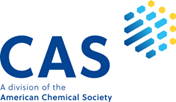Comparative Study on Healing Frequencies: Packing versus Primary Closure in Surgically Drained Skin Abscesses
Wound Healing: Packing vs. Primary Closure
DOI:
https://doi.org/10.69750/dmls.01.05.054Keywords:
Skin abscess, primary closure, wound packing, surgical drainage, healing time.Abstract
Background: Localized collection of pus in skin abscesses caused by bacterial infections always required surgical drainage which is usually accompanied by wound packing or primary closure.
Objectives: The objectives of the present study were to evaluate which of these two methods is faster in healing, caused less postoperative pain, patients stayed less in the hospital and created less complications after surgery.
Methodology: A comparative study was conducted on 100 patients with acute skin abscesses. Group A was the packing group and group B was the primary closure group, and patients were equally divided. Findings were gathered on the based of time to heal, Visual Analog Scale(VAS) pain score, hospital stay, recurrence rate and complication rate. SPSS version 27.0 was used, descriptive statistics were performed using the T-test and Chi-square test ( p≤0.05) was considered statistically significant
Results: The primary closure group showed statistically better results in terms of healing time, length of hospital stay, postoperative pain, and incidence of complications compared to the packing group. Recurrence rates were slightly higher in the packing group, but the difference was not statistically significant.
Conclusion: The present study has suggested that primary closure was better method for overall outcome, therefore these results considered as the method of choice for management of skin abscesses that have been drained surgically for coming surgeons.
Downloads
References
Yuan Y, Zhong X, Zhang J, Shen C, Huang G, Zhang J, et al. Artificial dermis combined with split-thickness skin autograft in the treatment of hand thermal compression wounds: a single center case-control study. Frontiers in Surgery. 2023;10.doi: 10.3389/fsurg.2023.1304333
Groenen H, Bontekoning N, Jalalzadeh H, Buis DR, Dreissen YEM, Goosen JHM, et al. Incisional Wound Irrigation for the Prevention of Surgical Site Infection: A Systematic Review and Network Meta-Analysis. JAMA Surgery. 2024;159(7):792-800.doi: 10.1001/jamasurg.2024.0775
Shetty DD. COMPARATIVE STUDY OF CONVENTIONAL INCISION AND DRAINAGE VERSUS PRIMARY CLOSURE WITH CLOSED SUCTION DRAIN IN ACUTE CUTANEOUS ABSCESSES 2021.
King A, Fegan K, Morgan K, Hill JE, Harrison J. Commentary on packing vs non-packing of pilonidal sinus cavities after incision and drainage. British Journal of Community Nursing. 2024;29(Sup3):S26-S30.
Tasneem B, Tasneem A, Ismail A, Rehman RM, Muttaqi A, Ahmad A. To compare the results of primary closure of pilonidal sinus with or without redivac drain. Pakistan Journal of Surgery. 2021;37(1).
SOHA G, WALEED MM, MELAD MM, MOSTAFA SA, ABOELFATH MK. Comparative Study between Subcuticular Suturing With and Without Drain for Wound Closure in Obese Women in Obstetric and Gynecological Operations. The Medical Journal of Cairo University. 2022;90(12):2047-52.
Newton K, Dumville J, Briggs M, Law J, Martin J, Pearce L, et al. Postoperative packing of perianal abscess cavities (PPAC2): randomized clinical trial. British Journal of Surgery. 2022;109(10):951-7.
RAJ M, ARYA S, CHEJARA RK, CHAUDHARY R, MANI V. Management of Breast Abscess by Open Drainage with Primary Closure versus Standard Incision and Drainage-A Randomised Trial. Journal of Clinical & Diagnostic Research. 2021;15(5).
El-Badry AM, Mahmoud AG, Ali MM. Closure of Emergency Midline Laparotomy over Subcutaneous Closed Suction Drain to Mitigate Incisional Surgical Site Infection, Dehiscence and Hernia: A Prospective Comparative Study. The Egyptian Journal of Hospital Medicine. 2022;86(1):477-85.doi:10.21608/ejhm.2022.2137 99
Ahmed ASM, Ibrahim BAY, Mohamedahmed AYY, Salim OEFH. Primary versus delayed primary skin closure for prevention of surgical site infections in contaminated abdominal surgery: A meta-analysis of randomized controlled trials. 2021.
Wu K, Sun J, Li X. Measures for Prevention and Control of Surgical Site Infection. In: Tang P, Wu K, Fu Z, Chen H, Zhang Y, editors. Tutorials in Suturing Techniques for Orthopedics. Singapore: Springer Singapore; 2021. p. 23-35.doi: 10.1007/ 978-981-33-6330-4_3
Yousafzai SM, Ugurlucan M, Awan A, Canver CC. Cost and clinical effectiveness of aggressive surgical debridement and delayed primary closure of infected cardiac surgical wounds. Journal of Wound Care. 2022;31(2):148-53.doi: 10.12968/jo wc.2022.31.2.148
Oehme F, Rühle A, Börnert K, Hempel S, Link BC, Babst R, et al. Simple Wound Irrigation in the Postoperative Treatment for Surgically Drained Spontaneous Soft Tissue Abscesses: A Prospective, Randomized Controlled Trial. World Journal of Surgery. 2020;44(12):4041-51.doi: 10.1007/s00268-020-05738-1
Singh A, Panda K, Mishra J, Dash A. A Comparative Study between Indigenous Low Cost Negative Pressure Wound Therapy with Added Local Oxygen versus Conventional Negative Pressure Wound Therapy. Malays Orthop J. 2020;14(3):129-36.doi: 10.5704/moj.2011.020
Ota H, Danno K, Ohta K, Matsumura T, Komori T, Okamura S, et al. Efficacy of Negative Pressure Wound Therapy Followed by Delayed Primary Closure for Abdominal Wounds in Patients with Lower Gastrointestinal Perforations: Multicenter Prospective Study. Journal of the Anus, Rectum and Colon. 2020;4(3):114-21.doi: 10.23922/jarc. 2019-043
Sawada G, Kim HM, Ichikawa Y, Hayashi R, Takata A, Murakami M, et al. Clinical Impact of Two-Week Placement of a Subcutaneous Suction Drain in Preventing Incisional Surgical Site Infection in Open Gastrointestinal Surgery with Class 4 Dirty Wound: A Retrospective Study. Surgical Infections. 2022;23(8):722-8.doi: 10.1089/sur.2022.175
Walker A, Wilson M. Surgical Site Infections. In: Coccolini F, Catena F, editors. Textbook of Emergency General Surgery: Traumatic and Non-traumatic Surgical Emergencies. Cham: Springer International Publishing; 2023. p. 1737-50.doi: 10.1007/978-3-031-22599-4_115
Khalil AA, Elshawy M, Elbarbary M, Elghamrini Y. Closed Technique with Suction Drain versus Partial Closure Technique in Midline Repair of Pilonidal Sinus: A Comparative Study. Open Access Surgery. 2021;14(null):21-7.doi: 10.2147/ OAS.S308212
Pfammatter M, Erlanger TE, Mayr J. Primary Transverse Closure Compared to Open Wound Treatment for Primary Pilonidal Sinus Disease in Children. Children. 2020;7(10):187.doi: 10.3390/children7100187
Carannante F, Costa G, Miacci V, Bianco G, Masciana G, Lauricella S, et al. Comparison of purse-string technique vs linear suture for skin closure after ileostomy reversal. A randomized controlled trial. Langenbeck's Archives of Surgery. 2024;409(1):141.doi: 10.1007/s00423-024-03332-w
Chopade SP, Adhikari GR. Comparative Study of Limberg Flap Reconstruction With Wide-Open Excision and Healing by Secondary Intention in the Management of Pilonidal Sinus: Our Experience at a Tertiary Care Center in India. Cureus. 2022;14(6):e26396.doi: 10.7759/cureus.26396
Khan UD. Periprosthetic Infection in Primary and Secondary Augmentation Mammoplasty Using Round Silicone Gel Breast Implants: Comparative Analysis of 2521 Primary and 386 Secondary Mammoplasties in a Single Surgeon Practice. Aesthetic Plastic Surgery. 2021;45(1):1-10.doi: 10.1007/s00266-020-01965-y
Giri P, Krishnaraj B, Sistla SC, Sistla S, Basu D, Shankar G, et al. Does negative pressure wound therapy with saline instillation improve wound healing compared to conventional negative pressure wound therapy? - A randomized controlled trial in patients with extremity ulcers. Annals of Medicine and Surgery. 2021;61:73-80.doi: 10.1016/j.amsu.2020.12.015
Hopkins B, Eustache J, Ganescu O, Cipolla J, Kaneva P, Fried GM, et al. S116: Impact of incisional negative pressure wound therapy on surgical site infection after complex incisional hernia repair: a retrospective matched cohort study. Surgical Endoscopy. 2021;35(7):3949-60.doi: 10.1007/s00464-020-07857-1
Katiyar AK, Agarwal H, Priyadarshini P, Kumar A, Kumar S, Gupta A, et al. Primary vs delayed primary closure in patients undergoing lower limb amputation following trauma: A randomised control study. International Wound Journal. 2020;17(2):419-28.doi: 10.1111/iwj.13288






















